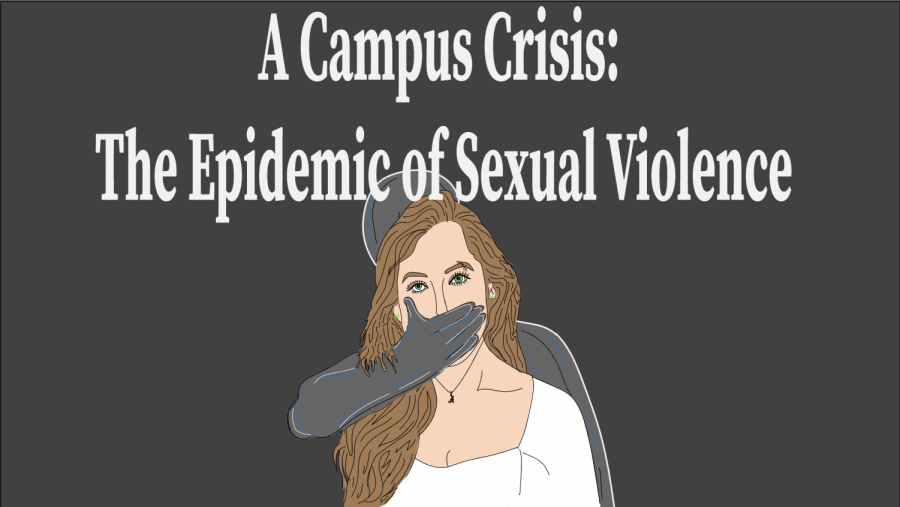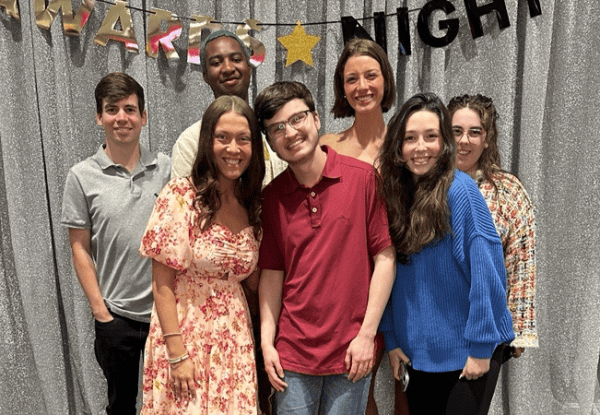Opinion | Introducing ‘A Campus Crisis: The Epidemic of Sexual Violence’
June 16, 2021
Are emails enough to combat rape culture, on and off campus?
Last week, UA President Stuart Bell sent out an email outlining the resources available to UA students that have experienced sexual assault. Many UA students may be familiar with this email, a version of which is sent out roughly once a semester.
The email expresses the University’s intention to create “an environment free from discrimination or harassment based on protected classes and expects everyone who lives, works, teaches and studies within this community to contribute positively to the environment.”
However, the resources in the email appear to largely deal with the aftermath of instances of rape and sexual assault, including medical care and mental health services available to those that have been affected by sexual violence.
What resources are available to prevent sexual violence in the first place? How are we challenging rhetoric surrounding sexual violence?
A New Series
In response to these questions, this article serves to launch a five-part series featuring a range of campus voices on the issue of sexual violence. The series will highlight various groups on campus that have dedicated themselves to ending sexual violence, both on and off campus.
The purpose of this series and this introduction is not to criticize a particular announcement by President Bell, nor to criticize the University. It is admirable to draw awareness to instances of sexual violence at all, as it is too often an ignored and taboo subject.
However, the timing of his announcement followed the Alabama Supreme Court decision to allow Megan Rondini’s wrongful death lawsuit against her alleged rapist to move forward.
Megan Rondini is a former UA student who died by suicide in 2016 after alleging rape against T.J. Bunn Jr., a prominent member of the Tuscaloosa community.
Alabama’s archaic law requires those who report sexual violence to demonstrate that they “earnestly” resisted the assault. This law paved the way for Megan to be transformed in the public narrative from a survivor seeking justice into a suspect that had somehow invited the harm done to her.
Megan’s story reflects a pattern of victim-blaming in our culture that has to end. It reflects the continued prevalence of rape culture, both on and off UA’s campus.
When Megan sought help from the police, she was reportedly accused of not preventing Bunn’s advances. In contrast, Bunn was met with sympathy in his interrogation.
When she sought help from our own campus, she was reportedly denied mental health care. Though the UA Counseling Center serves as a resource for students to receive counseling, Megan reported being denied by a staff therapist that had a connection to the Bunn family.
The recently popularized “me too.” Movement, a nonprofit organization dedicated to combating sexual violence, defines rape culture as “the systems, beliefs, and behaviors rooted in patriarchy that allow for its prevalence in society.”
This complex and comprehensive system demands attention, understanding and action. And the issue is more urgent than ever.
The purpose of this series is to combat rape culture using the techniques of journalism: documenting the unknown, reporting that which is concealed and challenging the norms that dictate all of our lives. The best weapon that UA students have against rape culture is knowledge. Injustice thrives in silence.
While we allow survivors of sexual violence to be dimissed, demeaned, and ignored, we hold up the standard that they are deserving of shame, rather than healing. We affirm that voicing the actions done to them is taboo and socially undesirable. This attitude is nothing more than complacency. It is cowardice. There is no middle ground in sexual violence.
Why Now?
In creating this series, I was confronted with a lot of difficult questions. Why am I not waiting to do this until April? Wouldn’t it be more timely, more relevant, to introduce such a series in Sexual Assault Awareness month?
While issues of sexual violence are particularly flashy during that time period, survivors don’t have the luxury of thinking about their experiences just one-twelfth of the year. The harmful rhetoric of rape culture follows them in their every action and conversation. If they do not get the privilege of complacency, nor should we. We should be willing to pursue discomfort in favor of justice.
Another issue I was confronted with was how to best honor Megan. Megan’s story resonated with me deeply, as it ought to all UA students. She was 20 years old when she passed away.
I am that same age now.
I have envisioned the future I might have in the next decade. I could graduate, start my career, get married, have a family, buy a house. All in the next ten years.
Megan seemed to imagine the same future for herself, texting a friend in February 2016, “When all is said and done, I wonder what I could’ve accomplished if one man didn’t completely rip everything away from me.”
To honor Megan, I questioned how I could capture an issue as important as sexual violence in one opinion piece while granting it the respect it deserves. Then it hit me. I couldn’t.
The prevalance of sexual violence reflects institutions established at the very beginning of human society. The examination of sexual violence also necessitates the consideration of institutions of racism, sexism and class discrimination. The end of sexual violence will not be achieved with one opinion piece.
But why can’t UA students try to start here?
Disclaimers
I will provide a couple of disclaimers for this series. The first is that these pieces will have gaps. It is impossible to capture the complexity and history of sexual violence in a single article. I wouldn’t want to even attempt such an endeavor, because I don’t want this series to be the end of the discussion surrounding sexual violence at the University, nor is it the beginning.
There are already so many groups on campus that have dedicated themselves to combating rape culture, both on campus and beyond. I hope to partner with and feature such groups to create a series that covers many aspects of sexual violence. The issue of ending sexual violence is one that will require as many resources and talented individuals as it can get.
The second disclaimer, as I mention in my article, is that Megan Rondini is not a martyr. She was not someone whose death had to occur in order to bring about change. She was a whole individual, one with a rich life of friends, family and ambitions. I wish her family peace in the wake of the Alabama Supreme Court decision.
We can honor her by viewing her, and others like her, as real people with complex internal narratives. In doing so, we may humanize what has been dehumanized. We may uplift what has been demeaned.
I ask that in viewing this series, you seek to understand. I ask that you be open to challenging your own perspectives about rape culture. In doing so, we can only grow. We as UA students can only become more empathetic, kinder and closer to global justice.
If you have any criticisms or questions for me, I welcome them. I am open to any conversations that might broaden my own perspective, and those of others, on such an important and prevalent issue. In addition, if you would like to contribute to the series in any way, please reach out to me at [email protected]










